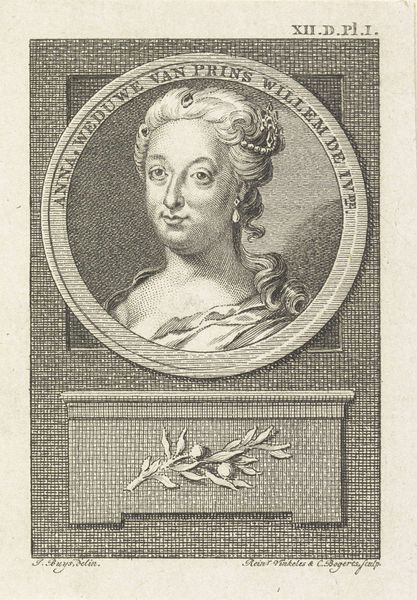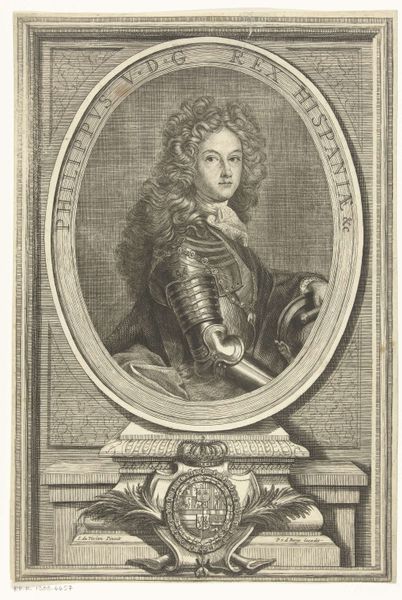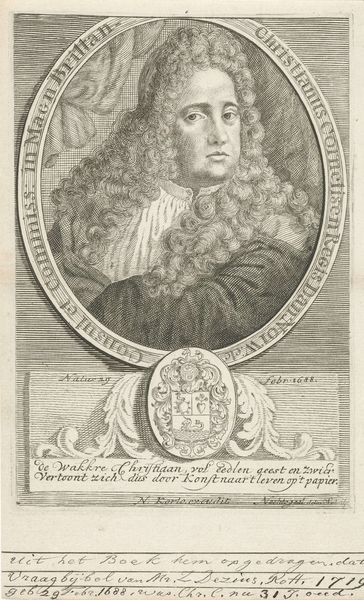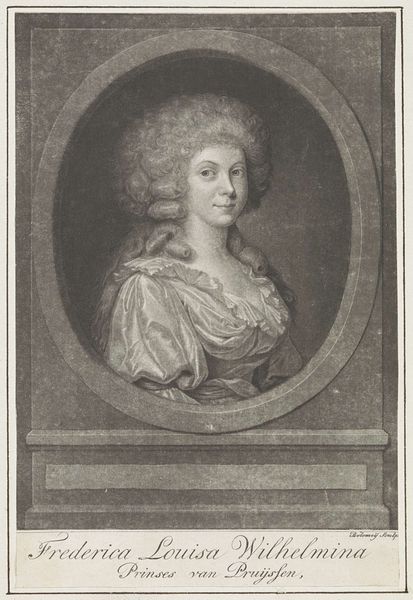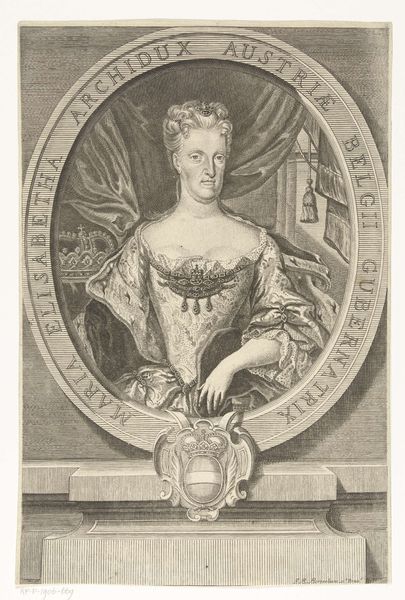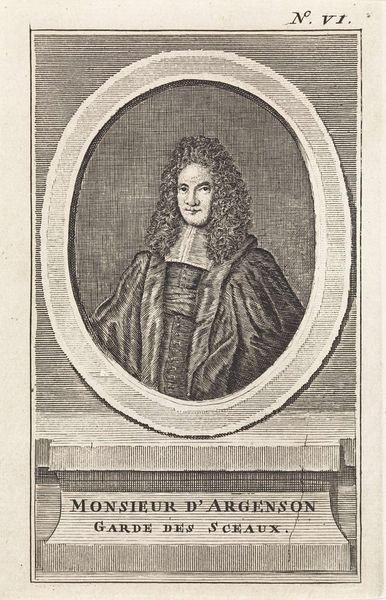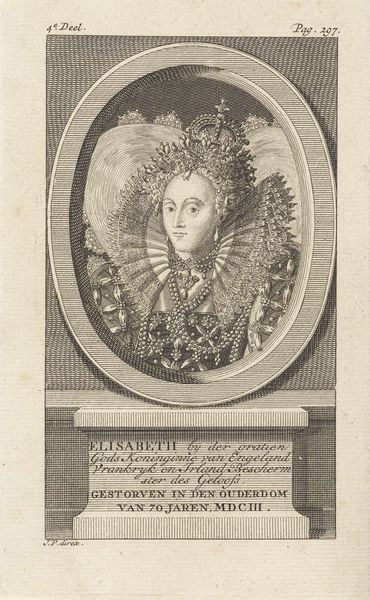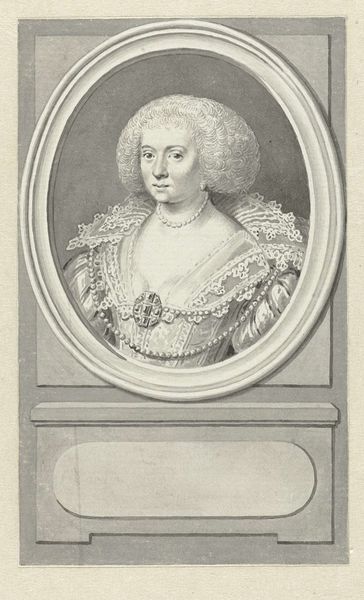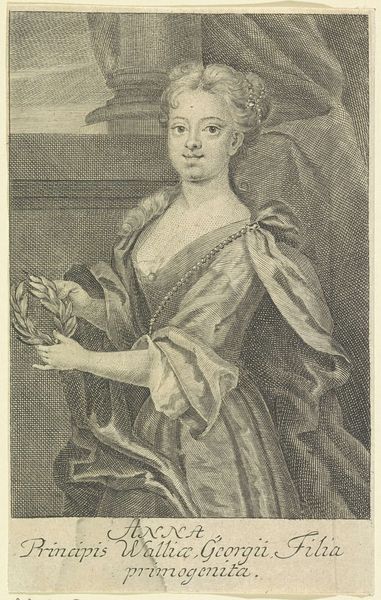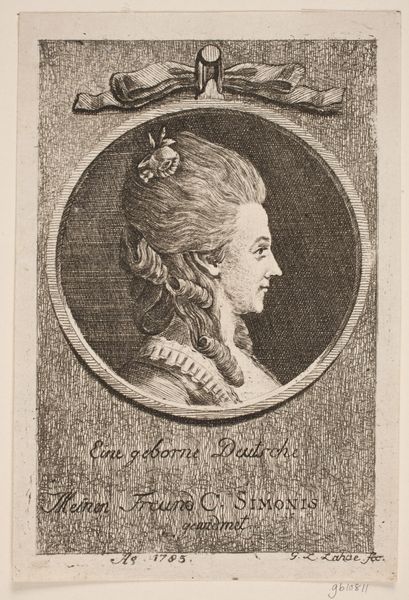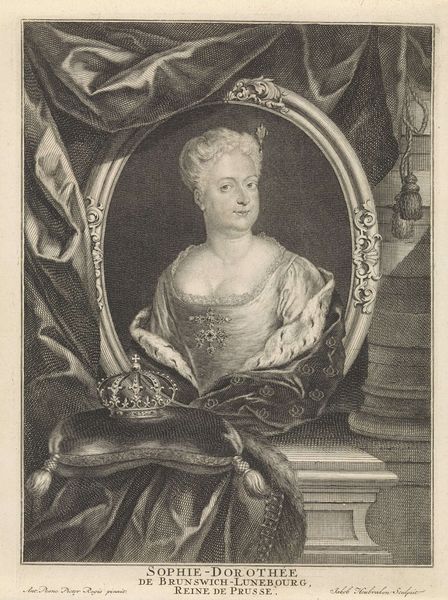
drawing, print, engraving
#
portrait
#
pencil drawn
#
drawing
#
neoclacissism
#
shading to add clarity
# print
#
pencil sketch
#
old engraving style
#
pencil drawing
#
engraving
Dimensions: height 100 mm, width 53 mm
Copyright: Rijks Museum: Open Domain
This is Eberhard Siegfried Henne’s portrait of Wilhelmina van Pruisen, made using etching, a printmaking technique, around the late 18th century. The etching process involves using acid to cut into a metal plate, traditionally copper or zinc, to create a design. The plate is covered with a waxy, acid-resistant substance, through which the artist scratches the image. When the plate is dipped in acid, the exposed lines are etched into the metal. The plate is then inked, and the surface wiped clean, leaving ink only in the etched grooves. Finally, the plate is pressed onto paper, transferring the image. In Henne’s portrait, the fine lines and delicate shading, capture the texture of Wilhelmina’s elaborate hairstyle and clothing. The precision of the etching allows for intricate details, reflecting the social and cultural context of the time, where artistry and craftsmanship were highly valued. The production of prints like these allowed for wider distribution of images, contributing to the circulation of knowledge, and ideas across society. Ultimately, understanding the etching process and the work involved enhances our appreciation of the artwork itself, blurring the boundaries between craft and fine art.
Comments
No comments
Be the first to comment and join the conversation on the ultimate creative platform.
